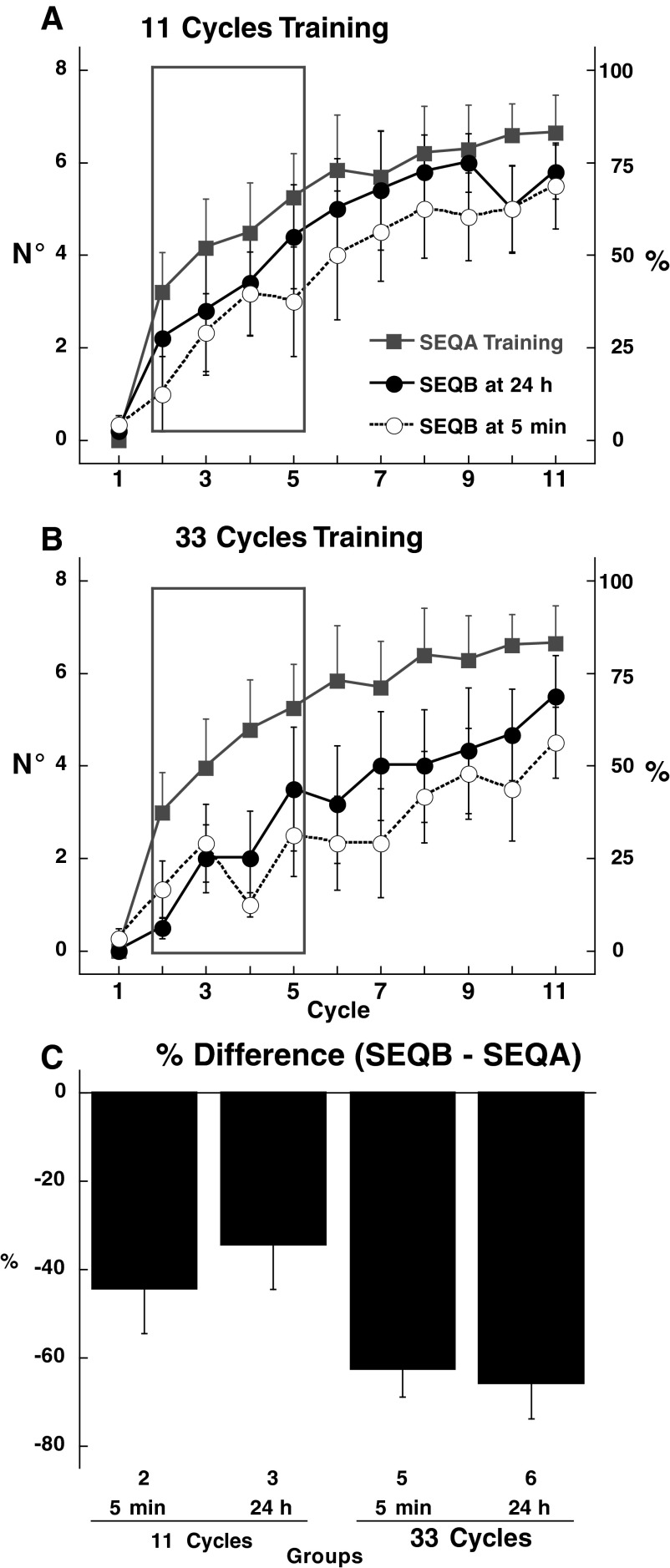FIG. 7.
Anterograde interference. Correct anticipatory movements for SEQB. A: groups 2 and 3 (11 cycles of training). Correct anticipatory movements for the first block of SEQB are plotted for groups 2 (empty black circles) and 3 (filled black circles). There was no significant difference in SEQAtrain for the 2 groups (P > 0.8) and data were combined (filled gray squares). B: effect of 33 cycles of SEQAtrain (groups 5 and 6). Correct anticipatory movements for the first block of SEQB are plotted for groups 5 (empty black circles) and 6 (filled black circles). There was no significant difference in SEQAtrain for the 2 groups (P > 0.8) and data were combined (filled gray squares). C: percentage performance change between SEQB and SEQAtrain (cycles 2–5) for groups 2, 3, 5, and 6. Each bar represents mean difference (±SE). There was a difference for amount of training but not for interference interval. Post hoc tests did not show any significant differences between the 4 groups.

